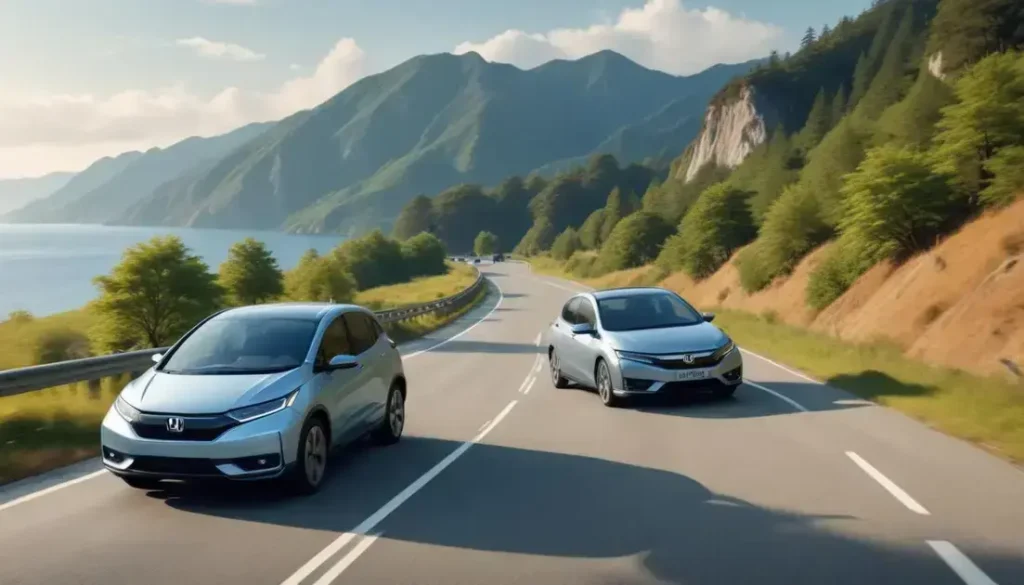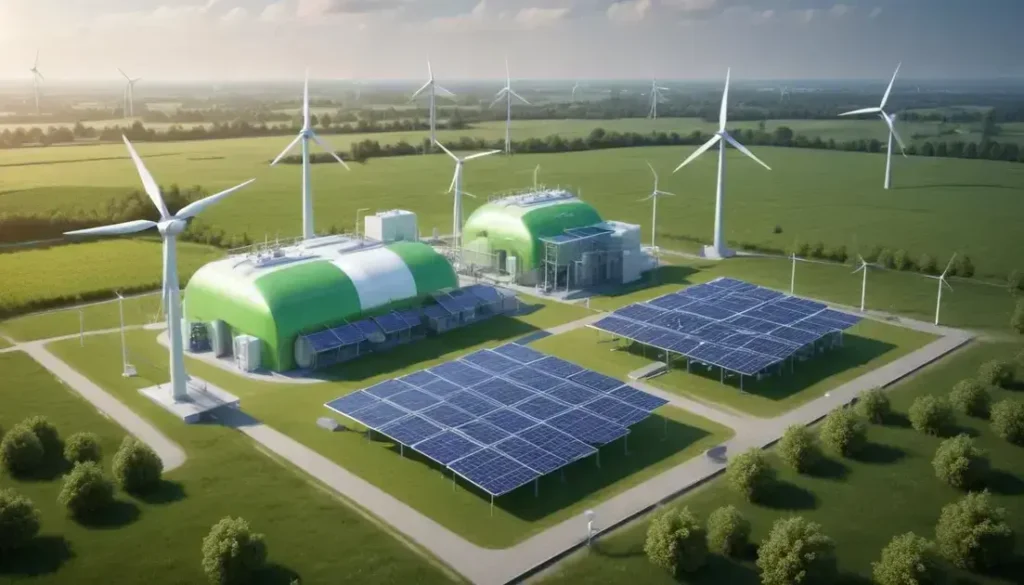Volvo is committed to sustainability by producing electric vehicles, using sustainable materials, and adopting renewable energy in manufacturing, aiming for net zero emissions by 2040.
In the evolving landscape of electric vehicles, Volvo stands out for its commitment to carbon-neutral energy. This article explores how their initiatives impact businesses in Australia.
Introduction to Volvo’s sustainability initiatives
Volvo has embarked on a significant journey towards sustainability, committing to a range of eco-friendly initiatives aimed at reducing their environmental footprint. As part of their strategy, the manufacturer plans to go fully electric by 2030, transitioning from traditional vehicles to electric vehicles (EVs) that produce zero tailpipe emissions. This shift not only aligns with global objectives to combat climate change but also positions Volvo as a leader in the automotive sector.
In addition to transitioning to electric vehicles, Volvo is committed to using sustainable materials in their car production. The company aims to incorporate recycled and bio-based materials, ensuring that their vehicles are not just energy-efficient but also environmentally responsible throughout their life cycle. This holistic approach to sustainability reflects a growing awareness among consumers regarding the importance of eco-conscious manufacturing.
Volvo’s dedication to sustainability extends to their supply chain as well. They are actively working to ensure that all their suppliers adhere to strict environmental standards, further strengthening their commitment to a greener future. Overall, these initiatives represent a pivotal movement towards a more sustainable automotive industry, making a tangible impact on global emissions and setting an example for other companies.
Overview of the ES90 electric vehicle
The new Volvo ES90 electric vehicle represents a significant leap in the automotive industry, highlighting the brand’s commitment to sustainability and innovation. This all-electric SUV combines cutting-edge technology with luxury, offering a spacious interior and state-of-the-art performance.
One of the standout features of the ES90 is its impressive range, capable of travelling over 600 kilometres on a single charge. This range addresses a common concern among consumers about the practicality of electric vehicles, making it an appealing choice for both city and long-distance driving.
Safety remains a top priority for Volvo, and the ES90 is equipped with advanced driver assistance systems, setting new standards in vehicle safety. These features include autonomous driving capabilities and comprehensive collision avoidance technologies, ensuring peace of mind for drivers and passengers.
Inside the ES90, users will find a blend of luxurious materials and digital interfaces that enhance the overall driving experience. The infotainment system is intuitive, integrating seamlessly with smartphones to provide connectivity and convenience. Overall, the Volvo ES90 is not just a vehicle; it is a comprehensive solution for eco-conscious drivers seeking performance, safety, and sustainability.
Impact of charging methods on carbon footprint
The choice of charging methods for electric vehicles, such as the Volvo ES90, plays a crucial role in determining their overall carbon footprint. Various charging options, including home charging, public charging stations, and ultra-fast charging, can significantly impact greenhouse gas emissions.
Home charging typically uses electricity from the grid, which may be generated from fossil fuels or renewable sources. In regions where renewable energy is predominant, this method can reduce emissions substantially. Conversely, relying on fossil fuels can negate many of the environmental benefits of driving an electric vehicle.
Public charging infrastructure is rapidly expanding, making it easier for drivers to find convenient spots to power their vehicles. However, charging station emissions depend on the energy mix in the local grid. Areas with a higher percentage of renewable energy sources will inherently offer greener charging options, while those still reliant on coal or natural gas could lead to higher emissions.
Ultra-fast charging stations, while delivering a quick recharge, may also draw power from less sustainable sources. Therefore, understanding the energy origins used in charging is essential for consumers who wish to minimize their carbon footprint while enjoying the benefits of electric mobility.
Life Cycle Assessment (LCA) of Volvo EVs
The Life Cycle Assessment (LCA) of Volvo’s electric vehicles (EVs) provides valuable insights into their environmental impact from production to end-of-life. This comprehensive analysis evaluates the energy consumption, materials used, and emissions produced at each stage of the vehicle’s life cycle.
Beginning with the raw materials, Volvo focuses on sourcing sustainable and eco-friendly components. The extraction and processing of materials such as lithium for batteries are scrutinised to assess their environmental effects. By prioritising recycled and renewable materials, the company aims to reduce the overall carbon footprint associated with component manufacturing.
During the production phase, the energy inputs and emissions are closely monitored. Volvo strives to use renewable energy sources in its manufacturing plants, thereby minimising CO2 emissions. The assembly processes are continuously optimised for efficiency, which further contributes to lowering the environmental impact.
Finally, the assessment includes the end-of-life treatment of the vehicle. Volvo has implemented strategies for recycling EV batteries and other components, ensuring that materials are reused rather than discarded. This closed-loop approach reflects the company’s commitment to sustainability and responsible resource management, making their electric vehicles a reliable choice for environmentally conscious consumers.
Volvo’s goals for net zero emissions
Volvo has set ambitious goals for achieving net zero emissions by 2040, reflecting its commitment to sustainability and environmental responsibility. This objective encompasses the complete lifecycle of their vehicles, from production through to use and eventual disposal.
A key component of Volvo’s strategy is transitioning to fully electric vehicle offerings. By 2030, the company aims to have 50% of its global sales consist of electric cars, significantly reducing emissions associated with fossil fuel dependency. This shift not only addresses climate concerns but also aligns with growing consumer demand for greener automotive options.
To support their net zero target, Volvo is investing in developing sustainable manufacturing processes. This includes utilising renewable energy in their factories and adopting innovative technologies to minimise waste. The company is also committed to using recycled materials in vehicle production, ensuring that resources are conserved and environmental impacts are mitigated.
Furthermore, Volvo is engaging stakeholders across the supply chain to enhance transparency and accountability in their sustainability efforts. By collaborating with suppliers to meet environmental standards, Volvo is fostering a culture of sustainability that extends beyond its own operations. Achieving net zero emissions is not just a goal for Volvo; it represents a transformative approach to shaping the future of the automotive industry.
Sustainable materials used in the ES90
The Volvo ES90 electric vehicle showcases a commitment to sustainability through the incorporation of eco-friendly materials. By prioritising sustainable materials, Volvo aims to lessen the environmental impact of its vehicles while maintaining high standards of quality and performance.
One of the key features of the ES90 is its use of recycled materials in the interior and exterior design. This approach not only reduces waste but also minimises the consumption of new resources. For instance, the vehicle’s upholstery and trim utilise recycled plastics, while its carpet is often made from reclaimed materials, further emphasising the brand’s focus on sustainability.
Additionally, Volvo sources materials like bio-based plastics, derived from renewable resources such as sugarcane. These innovative materials can significantly decrease the carbon footprint associated with vehicle production. By evaluating the entire life cycle of these components, Volvo ensures that every piece of the ES90 contributes to a greener future.
The company’s dedication to transparent sourcing is reflected in its supplier partnerships, focusing on organisations that share Volvo’s commitment to sustainability. Through these efforts, the ES90 not only embodies excellent engineering but also represents a forward-thinking approach to environmentally responsible manufacturing.
Global trends in EV production
The landscape of electric vehicle (EV) production is evolving rapidly, influenced by various global trends that shape the market. One prominent trend is the increasing demand for electric vehicles, propelled by growing environmental awareness and the push for sustainable transport solutions.
Manufacturers across the globe are investing heavily in EV technology, focusing on advancements in battery technology and charging infrastructure. This includes improved energy density, faster charging times, and longer ranges, all of which are crucial for consumer adoption. Key players in the automotive industry are adopting strategic partnerships with tech firms to leverage innovations in battery management systems and software.
Another important trend is the regulatory push for stricter emissions standards. Governments worldwide are implementing policies to incentivise EV production, including subsidies for manufacturers and consumers. This support is creating a more favourable environment for EV sales, with countries like Norway leading the way in market penetration.
Additionally, sustainability in production practices is becoming a focal point. Companies are increasingly embracing circular economy principles by sourcing recycled materials and implementing waste reduction strategies in their manufacturing processes. Overall, these global trends are defining a new era in automotive production, marking a significant shift towards electric mobility and greener technologies.
Volvo’s approach to carbon-neutral energy
Volvo’s approach to carbon-neutral energy is a fundamental aspect of its commitment to sustainability. The company aims to achieve this goal by transforming the way its vehicles are powered throughout their lifecycle. By focusing on renewable energy sources, Volvo is actively working to eliminate emissions associated with energy consumption in manufacturing and vehicle operation.
One significant initiative is Volvo’s investment in renewable energy for its factories. The company sources energy from wind, solar, and hydroelectric power, significantly reducing its reliance on fossil fuels. This transition not only lowers the carbon footprint of its production processes but also sets a benchmark for other manufacturers in the automotive industry.
In addition to sustainable manufacturing practices, Volvo is exploring energy solutions for its electric vehicles. The brand encourages customers to charge their cars using electricity from renewable sources. By promoting home solar energy systems for charging, Volvo aims to enhance its customers’ ability to drive with clean energy.
Furthermore, Volvo is investing in research and partnerships to develop innovative technologies that improve energy efficiency and reduce overall emissions. This comprehensive approach demonstrates Volvo’s dedication to leading the charge towards a more sustainable future in the automotive sector.
Implications for Australian EV market
The implications of Volvo’s sustainability initiatives for the Australian electric vehicle (EV) market are profound and far-reaching. As consumer awareness about climate change and environmental responsibility increases, demand for sustainable transport options is evolving. This shift is evident as more Australians seek eco-friendly vehicles that contribute to the reduction of carbon emissions.
Volvo’s commitment to producing electric vehicles like the ES90 aligns perfectly with the growing interest in EV adoption in Australia. As the government supports the transition towards electric mobility through subsidies and infrastructure investments, manufacturers are encouraged to enhance their EV offerings. This presents a prime opportunity for Volvo to establish a strong foothold in the competitive Australian market.
With its focus on sustainability, Volvo is not only appealing to environmentally conscious consumers but also to fleet operators looking to meet corporate social responsibility goals. Businesses and government fleets are increasingly considering electric vehicles to lower their overall carbon footprints.
Moreover, as charging infrastructure improves across Australia, the feasibility of owning an electric vehicle will continue to rise. Volvo’s ambitious sustainability goals will contribute to this push, further solidifying its reputation as a leader in the market. Overall, Volvo’s strategies have the potential to influence the landscape of the Australian EV market significantly.
In Summary: Volvo’s Impact on Sustainable Mobility
Volvo is leading the charge towards a more sustainable future in the automotive industry. By committing to electric vehicles and innovative sustainability practices, they are not only addressing environmental concerns but also setting a benchmark for other manufacturers.
Their focus on carbon-neutral energy, the use of sustainable materials, and the implications for the Australian electric vehicle market showcase their dedication to reducing emissions and promoting eco-friendly transport solutions.
As the demand for electric vehicles grows, Volvo is positioned to play a crucial role in shaping a cleaner, greener future for all road users. Their efforts demonstrate that it is possible to combine luxury and sustainability, appealing to a new generation of environmentally conscious consumers.
Ultimately, Volvo’s initiatives reflect a broader shift in the automotive industry, one that prioritises the planet and its resources, paving the way for a more sustainable tomorrow.
Frequently Asked Questions
What are the main sustainable initiatives of Volvo?
Volvo focuses on producing electric vehicles, using sustainable materials, and adopting carbon-neutral energy in its manufacturing processes.
How does Volvo contribute to reducing carbon emissions?
By committing to fully electric vehicles and sourcing renewable energy for production, Volvo aims to drastically lower its overall carbon footprint.
What impact do Volvo’s strategies have on the Australian market?
Volvo’s sustainability initiatives are likely to enhance the growth of the Australian electric vehicle market by promoting eco-friendly options and advancing charging infrastructure.
What materials does Volvo use in its electric vehicles?
Volvo incorporates recycled materials and bio-based plastics to minimize environmental impact and support sustainable manufacturing.
How does renewable energy play a role in Volvo’s operations?
Volvo uses renewable energy sources, such as wind and solar power, to power its factories, ensuring that production is not reliant on fossil fuels.
What are the future goals of Volvo in terms of sustainability?
Volvo aims to reach net zero emissions by 2040 and increase sales of electric vehicles significantly by 2030, reinforcing its commitment to sustainable transport.


